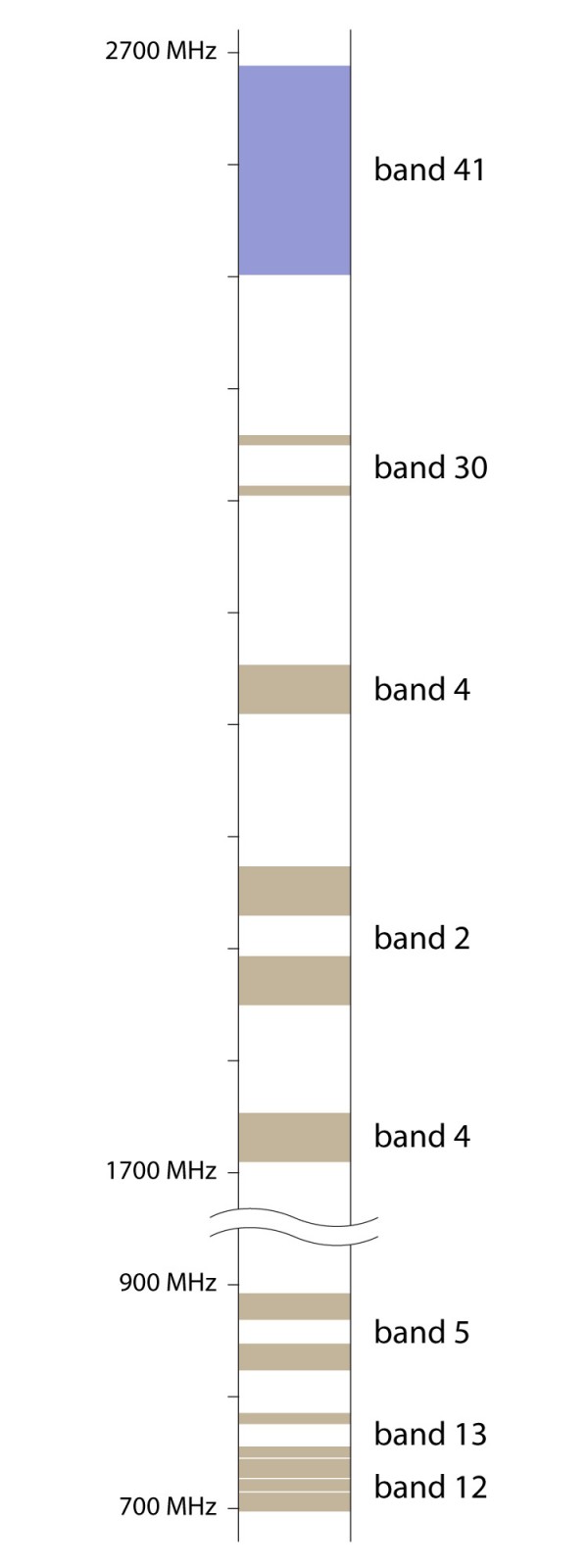A relatively high-frequency radio band. In the US, it is used exclusively by Sprint. Sprint uses this band for 4G LTE, and also launched 5G in this band in mid-2019.

Band 41 is an unpaired band, meaning there is only one contiguous block of spectrum, instead of one for uplink (phone-to-tower), and one for downlink (tower-to-phone). Therefore, in order to facilitate two-way communication, band 41 is specified for TDD operation instead of FDD. Basically, the phone and the tower "take turns" talking to each other over the same radio frequencies.
Band 41 spans 2,502 - 2,690 MHz, which is a relatively large amount of bandwidth, capable of handling a large amount of data at high speeds. However, this range of frequencies is higher than most bands used for mobile phones. That means band 41 signals do not reach as far, nor penetrate buildings and other objects, as well as bands in lower frequency ranges.
Band 41 is a much lower frequency than mmWave, though, which means it reaches farther and penetrates solids better than mmWave.
See: mmWave
Because it sits between traditional bands and mmWave, some now refer to frequencies in this range as "mid-band".
Before Sprint used band 41 for LTE, they deployed the ill-fated WiMax technology in the same frequency band.
The frequency range of band 41 was originally designated the BRS band, and was intended for "wireless cable" service.